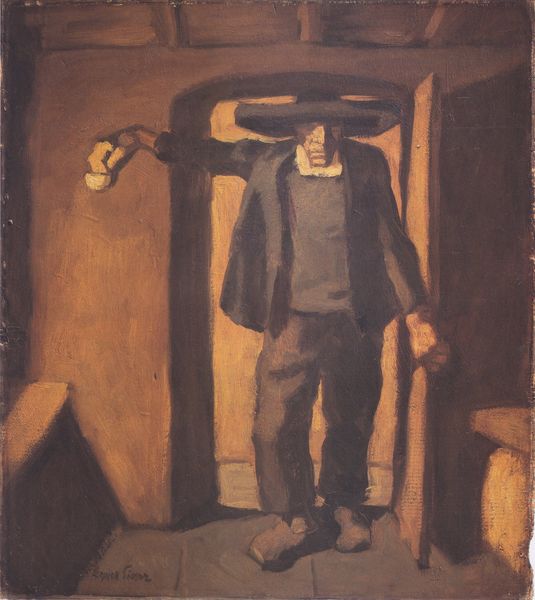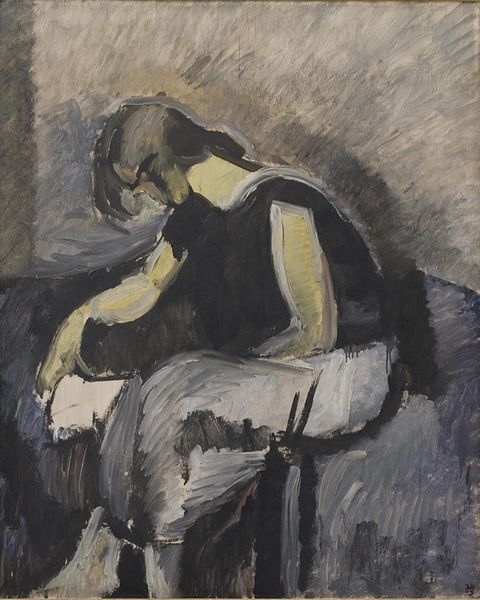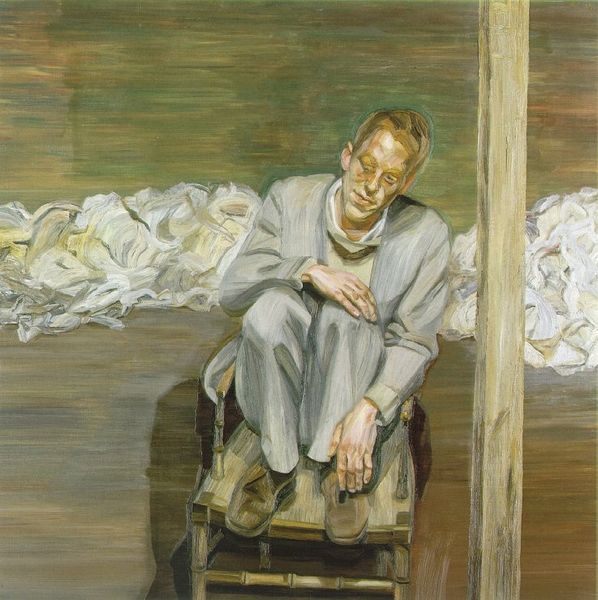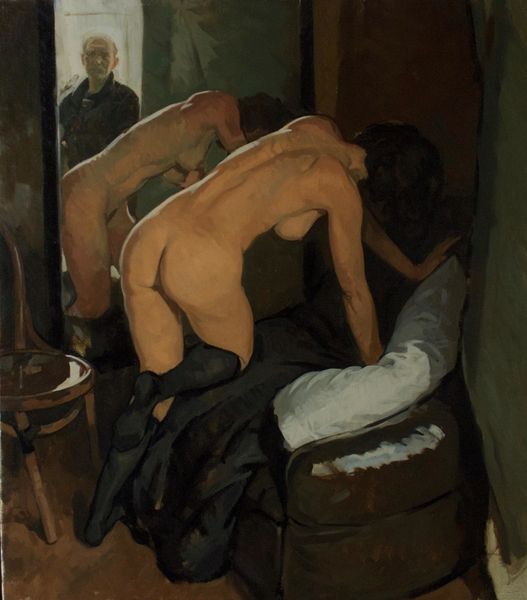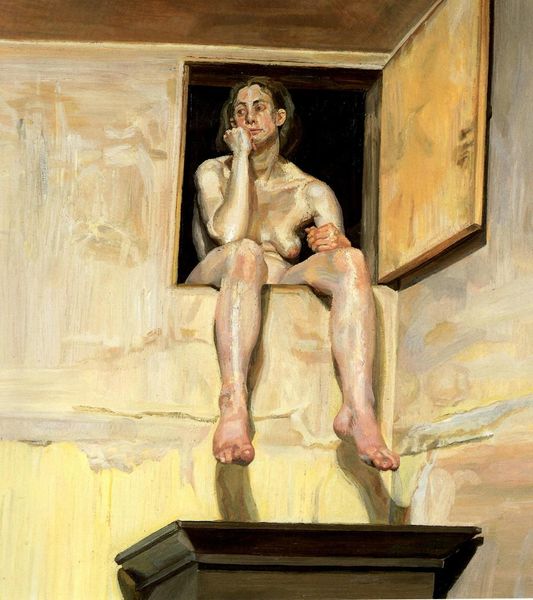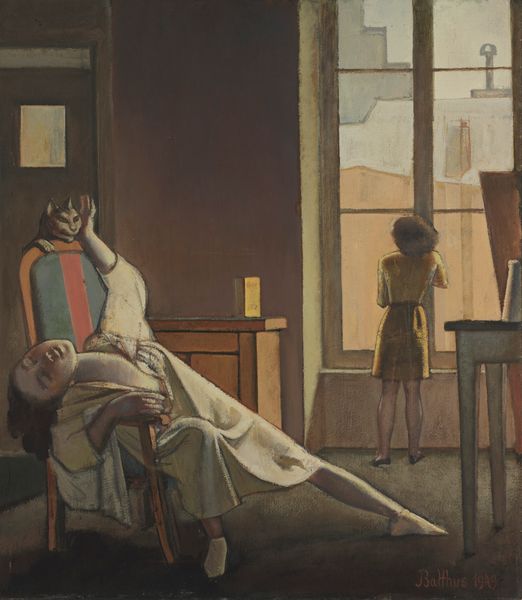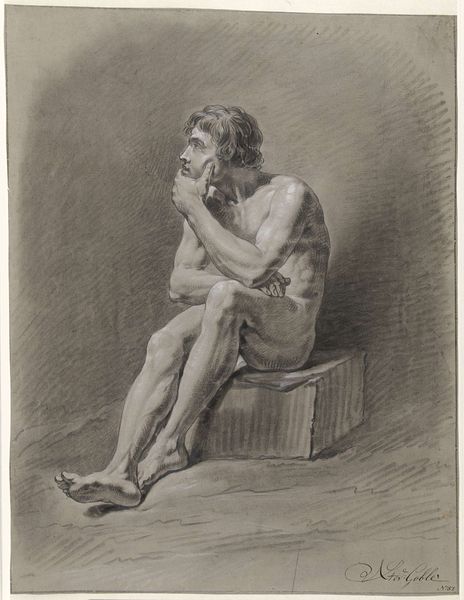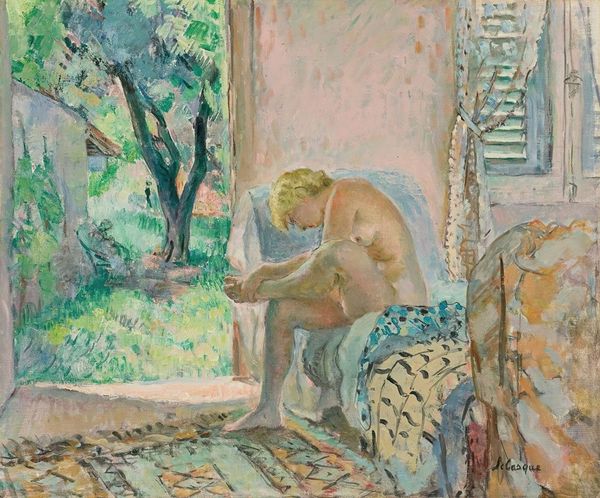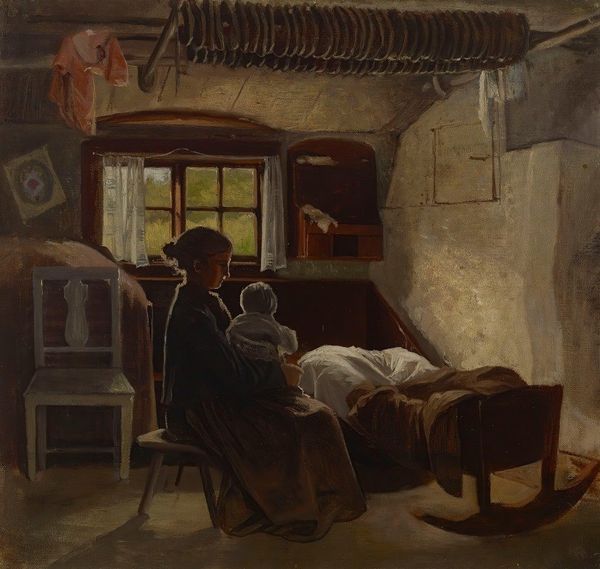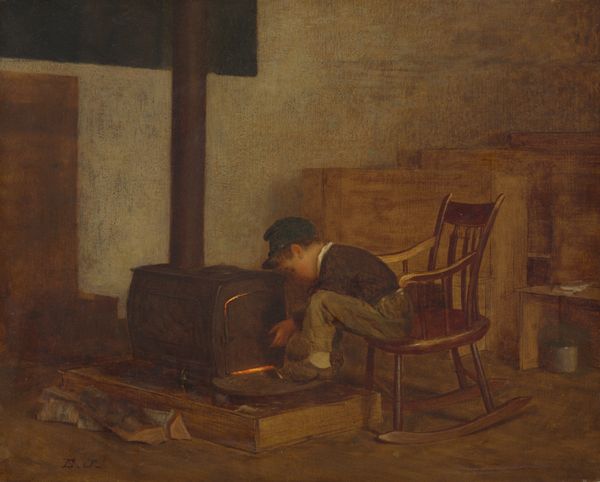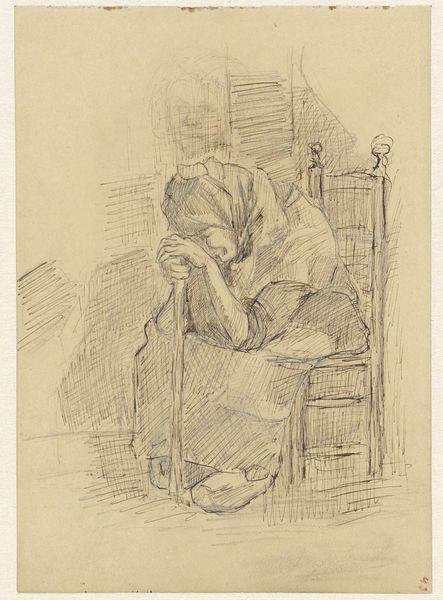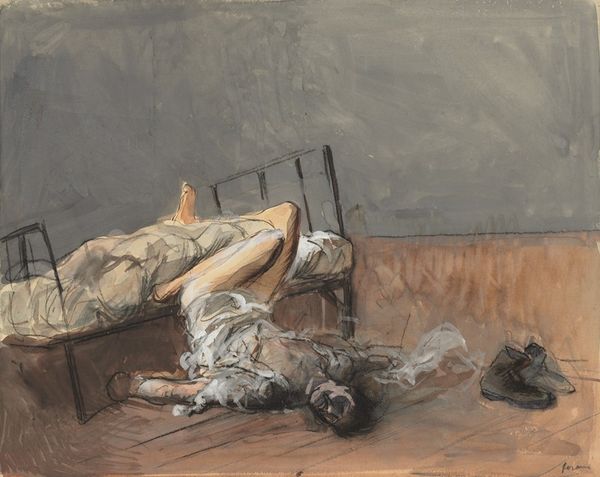
Dimensions: support: 1619 x 1299 mm frame: 1715 x 1390 x 97 mm
Copyright: © ADAGP, Paris and DACS, London 2014 | CC-BY-NC-ND 4.0 DEED, Photo: Tate
Editor: This is Francis Gruber’s painting, "Job." I am struck by the raw materiality of the figure and the rough, almost industrial, backdrop. What’s your take on this piece? Curator: Consider the context. Post-war France faced immense material scarcity. Gruber's use of muted colors and seemingly unrefined brushstrokes reflects the economic hardships and labor anxieties of the time. Does this shift your perspective on the work's meaning? Editor: It does. Seeing it as a product and reflection of its time makes it even more powerful. Thanks! Curator: Indeed, the artist's process mirrors the societal struggles depicted. Appreciating the materiality enhances our understanding.
Comments
Join the conversation
Join millions of artists and users on Artera today and experience the ultimate creative platform.
tate 7 months ago
⋮
Gruber was committed to realism and to Communism. Job was painted for an exhibition which opened shortly after the liberation of Paris in 1944. Gruber uses the Biblical story of Job's suffering as an allegory for the survival of hope under the Occupation. The inscription, which comes from The Book of Job, translates as: 'Now, once more my cry is a revolt, and yet my hand suppresses my sobs.' Gallery label, August 2004

